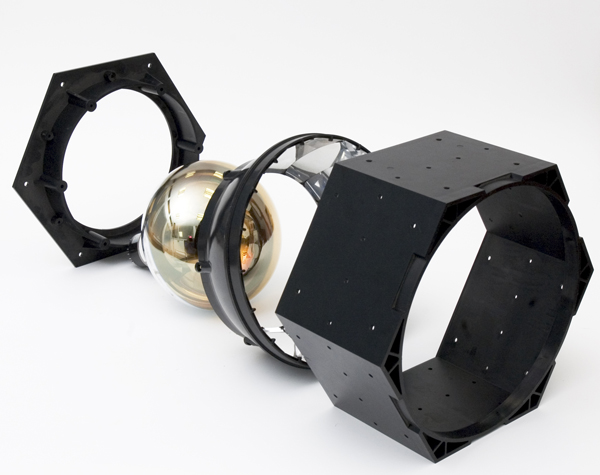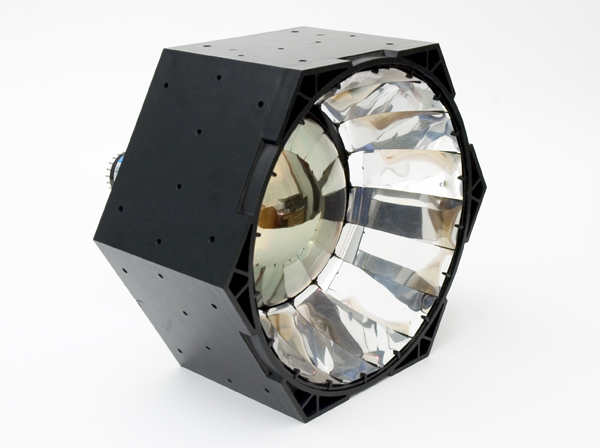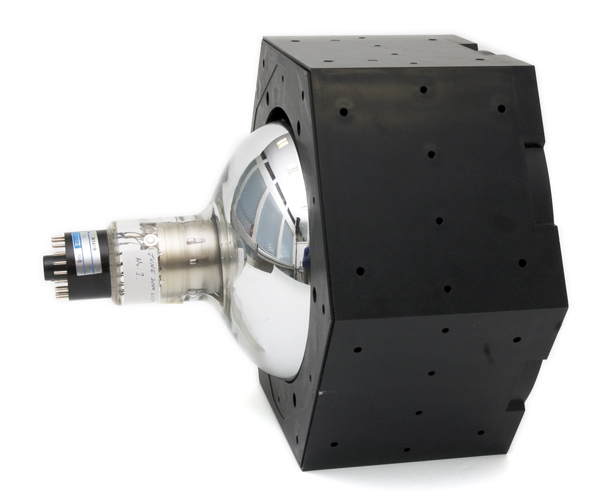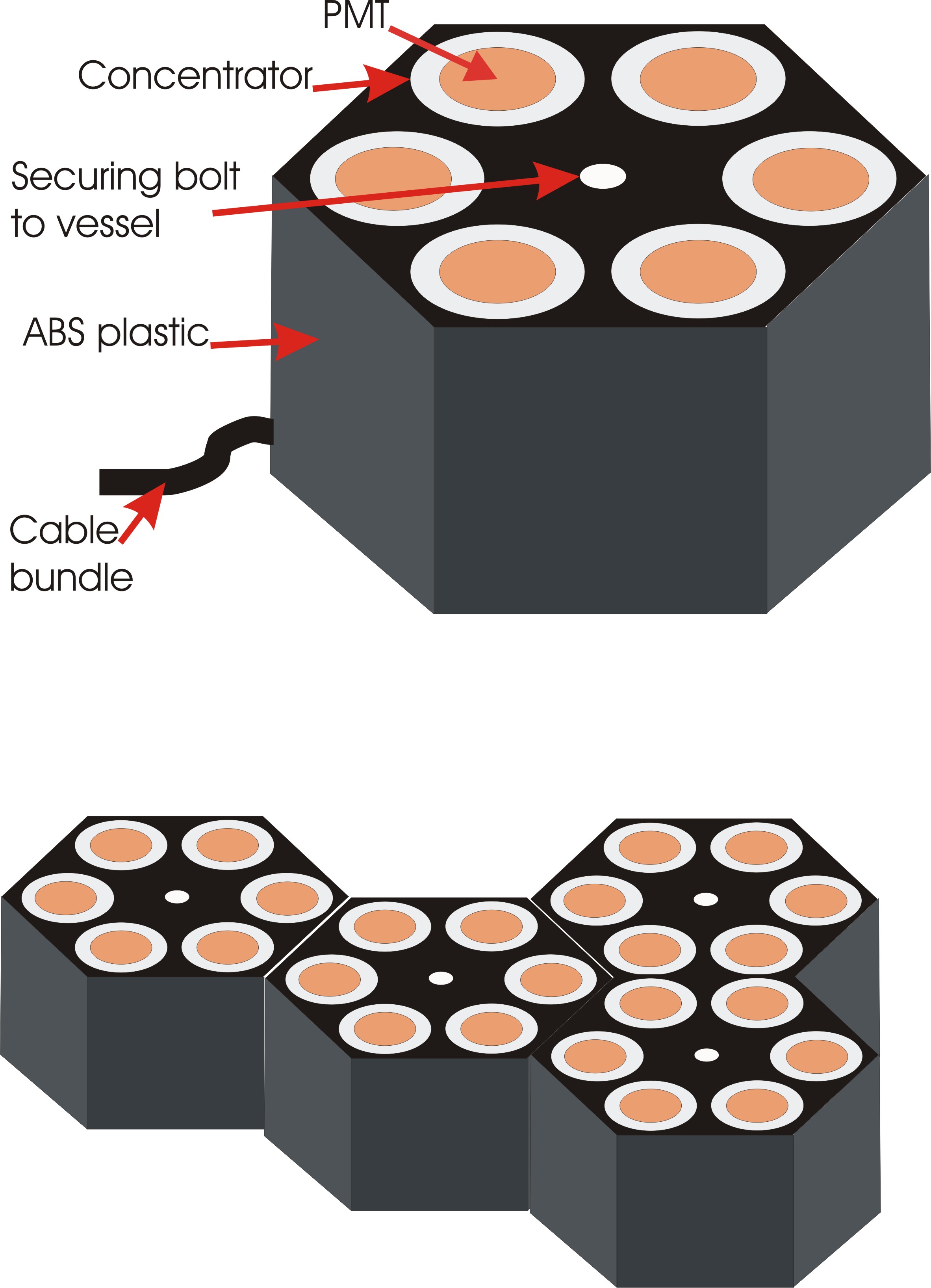From: Steve Biller (Steven.Biller@physics.ox.ac.uk)
Date: Thu Jun 09 2005 - 10:26:42 CDT
Thanks Hans,
I've included pictures detailing the SNO concentrator geometry and
photos of what was actually manufactured and how it attached to
the PMTs. In addition, I've included a very rough sketch of an idea
that Nick and I had about how one might encase multiple PMTs and
concentrators into hexagonal sub-units that could be manufactured
and tested off-site and then simply attached to the inside of the
vessel with central bolts. This would provide a secure yet flexible
support structure to cushion the tubes during movement.
Here are some more specific answers to your questions:
Hans Jostlein wrote:
>Thank you for your detailed and useful summary , Steve.
>I am very pleased that someone is running honest models on this.
>I am not surprised that some 30% gains are possible (the strawman cone I
>showed in my note would do that, most likely),
>which is certainly worthwhile if it does not compromise our ability to
>locate events.
>Since 3/4 of the area would be covered with reflectors, one might actually
>realize (theoretically, and in the absence of absorption)
>a fourfold gain if we boldly sum the geometric series (1 + 3/4 + (3/4)^2 . .
>.)
>
I think Lioville limits you to less than a fact of 2 without sacrificing
more solid angle and cutting into the fiducial volume.
>
>I have a few concerns which you may already have thought of and have the
>answers to:
>
>a. Do you have a sketch of your concentrator design?
>I would very much like to see that
>
>b. Do the concentrators stick out to where they deflect light that
>otherwise would hit a PMT directly?
>
Yes, the concentrators necessarily baffle the PMTs to a more restricted
solid angle. For SNO, this was another advantage as it shielded them
from light due to radioactivity near the PMT. For Braidwood, this is
less of an issue since the scintillation light from the fiducial
region is much greater, but I think it is unlikely to be a disadvantage
for us to restrict things more to the fiducial volume. We should, of
course, study this just to be sure.
>
>c. Braidwood uses scintillation light, not Cerenkov.
> Also, the detector is quite bit smaller than SNO.
>In view of those factors, do you expect we can differentiate, by timing,
>between first light and reflected light?
>Does our electronics design (such as it is) allow us to do that?
>If we can't differentiate, I suspect that the ability to locate the event is
>seriously
>compromised by the reflected light, which tends to illuminate PMT's more
>uniformly than the direct light.
>Can your model predict localization with and without integrating over all
>light, or up to some delay time ?
>
We should be able to deal with this. By far, most of the hits are due to
direct light with good timing information and, often, multiple hits.
The increased coverage should help in this regard with better sampling.
Even if there's, say, a 15% tail of reflected late light, these should
be easily identifiable as being out-of-time relative to the main pulse.
You can either throw out poor residuals in an iterative fit procedure,
or measure the late tail with calibration sources and use likelihood
to take it into account. Again, this is pretty much born out in SNO,
but we clearly should verify this more explicitly for Braidwood and this
is one of the things we're working towards with our simulations.
>
>d. It has been pointed out that the PMT's (Hamamatsu R5912's) have a
>significant drop off in QE at their curved edges:
>
Yes, that's the case with SNO tubes too. That's one of the reasons
why we get a smaller factor than the Lioville limit.
- Steve




This archive was generated by hypermail 2.1.6 : Fri Jun 10 2005 - 03:10:15 CDT